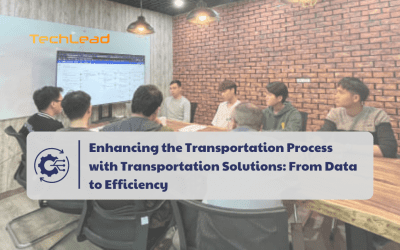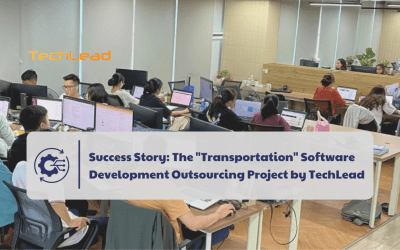Software development is a dynamic and complex process that involves various stakeholders, technologies, and methodologies. Despite advancements in project management and development practices, certain risks remain prevalent and can significantly impact project success. In this blog post, we will explore eleven common risks in software development, their potential implications, and effective strategies to minimize their impact.
1. Unclear Requirements of Software Development
Risk
Unclear or ambiguous requirements can lead to misunderstandings between stakeholders, resulting in rework, delays, and increased costs.
Implications
- Misalignment between the delivered product and stakeholder expectations.
- Increased likelihood of scope creep as requirements evolve.
- Impact on project timelines and resource utilization due to frequent changes.
Mitigation Strategies
- Conduct thorough requirements elicitation using techniques like interviews, workshops, and prototyping.
- Document requirements clearly and unambiguously, avoiding technical jargon.
- Validate requirements with stakeholders regularly to ensure alignment with project goals.
- Implement a change control process to manage requirement changes effectively.
2. Poor software development planning and estimating
Risk
Inadequate planning and inaccurate estimation of time, resources, and scope can lead to project delays, budget overruns, and compromised quality.
Implications
- Missed deadlines and milestones due to underestimated task complexities.
- Exceeding allocated budgets, requiring additional resources to complete the project.
- Reduced quality of deliverables due to rushed planning or insufficient resource allocation.
Mitigation Strategies
- Use estimation techniques such as Function Point Analysis, Story Points (Agile), or Parametric Estimation based on historical data and expert judgment.
- Break down project scope into manageable tasks using a Work Breakdown Structure (WBS) to identify dependencies and resource requirements.
- Conduct comprehensive risk assessments to identify potential threats and develop mitigation strategies.
- Adopt iterative planning to adjust project plans based on feedback and changing requirements.
- Allocate contingency buffers in schedules and budgets to accommodate unforeseen delays or scope changes.
3. Scope Creep

Risk
Scope creep occurs when additional features or requirements are added to the project without corresponding adjustments to time, budget, or resources.
Implications
- Increased project complexity and workload without proportional resource allocation.
- Delays in project delivery as new requirements are integrated.
- Budget overruns due to unplanned work and extended project timelines.
Mitigation Strategies
- Establish a formal change management process to evaluate and prioritize scope changes.
- Define and prioritize project requirements early to differentiate between essential and optional features.
- Maintain clear communication with stakeholders to manage expectations and minimize scope changes.
- Document all agreed-upon changes and their implications on project timelines and resources.
4. Lack of Communication in Software Development

Risk
Communication breakdowns between team members, stakeholders, and clients can lead to misunderstandings, delays in decision-making, and compromised project outcomes.
Implications
- Misalignment of project goals and objectives among team members.
- Delayed responses to issues or changes, impacting project progress.
- Increased likelihood of errors and rework due to unclear requirements or expectations.
Mitigation Strategies
- Establish regular communication channels and protocols for sharing updates, progress, and issues.
- Conduct regular meetings, such as daily stand-ups or weekly status updates, to ensure everyone is informed.
- Use collaboration tools and project management software to facilitate transparent communication and document sharing.
- Encourage open dialogue and feedback among team members and stakeholders to address concerns promptly.
5. Unrealistic Deadlines
Risk
Setting unrealistic project timelines can lead to stress, burnout among team members, compromised quality, and increased risk of project failure.
Implications
- Incomplete or subpar deliverables due to rushed development.
- Increased likelihood of errors and bugs as testing and validation phases are shortened.
- Decreased morale and motivation among team members due to constant pressure to meet deadlines.
Mitigation Strategies
- Conduct thorough project planning and estimation to set realistic deadlines based on available resources and project scope.
- Prioritize project requirements and deliverables to focus on essential functionalities first.
- Negotiate deadlines with stakeholders based on project complexity and resource availability.
- Continuously monitor project progress and adjust timelines as necessary based on team feedback and external factors.
6. Technical Complexity

Risk
Complex technical requirements or dependencies can pose challenges in implementation, integration, and performance optimization.
Implications
- Delays in project delivery as technical issues are identified and resolved.
- Increased development costs due to the need for specialized skills or additional resources.
- Compromised system stability or performance if technical challenges are not addressed adequately.
Mitigation Strategies
- Conduct a detailed technical assessment and feasibility study before starting development.
- Allocate resources with appropriate technical expertise to address complex requirements.
- Break down complex tasks into smaller, manageable components for easier implementation and testing.
- Implement a phased approach to development, focusing on critical functionalities first before tackling more complex features.
- Regularly review and update technical documentation to ensure alignment with project goals and requirements.
7. Insufficient Testing and Quality Assurance

Risk
Inadequate testing practices or limited quality assurance efforts can result in software defects, usability issues, and decreased user satisfaction.
Implications
Increased post-release support and maintenance costs to address bugs and issues discovered after deployment.
- Negative impact on user experience and satisfaction due to software instability or functionality gaps.
- Potential damage to organizational reputation and credibility if quality issues persist.
Mitigation Strategies
- Develop a comprehensive testing strategy that includes unit testing, integration testing, system testing, and user acceptance testing (UAT).
- Implement automated testing tools and frameworks to streamline testing processes and improve test coverage.
- Conduct regular code reviews and quality audits to identify and address potential issues early in the development cycle.
- Involve end-users and stakeholders in the testing process to gather feedback and validate software functionality.
- Allocate sufficient time and resources for testing and quality assurance activities to ensure thorough validation of all project deliverables.
8. Resource Constraints

Risk
Inadequate allocation or availability of resources, including personnel, technology, and infrastructure, can hinder project progress and success.
Implications
- Delays in project timelines as tasks remain incomplete due to resource shortages.
- Increased workload and stress among team members trying to compensate for resource gaps.
- Compromised quality of deliverables due to rushed or incomplete work.
Mitigation Strategies
- Conduct a thorough resource assessment and planning phase at the outset of the project to identify potential gaps or constraints.
- Allocate resources based on project priorities and critical path activities to ensure timely completion of key milestones.
- Implement resource management tools and techniques to track resource utilization and availability.
- Consider outsourcing or contracting external expertise to fill skill gaps or augment internal resources.
- Maintain open communication with stakeholders regarding resource needs and constraints to facilitate proactive resolution of issues.
9. Dependency on Third-Party Components or Services

Risk
Reliance on external vendors, APIs, or third-party components can introduce dependencies that are beyond the project team’s control.
Implications
- Delays in project timelines due to issues or changes in third-party components or services.
- Increased project costs if additional licensing fees or integration efforts are required.
- Reduced flexibility and adaptability if third-party providers discontinue or modify their offerings.
Mitigation Strategies
- Conduct thorough due diligence and risk assessment before selecting third-party components or services.
- Establish clear communication and agreements with vendors regarding service-level agreements (SLAs), support, and maintenance.
- Implement contingency plans and alternative solutions in case of vendor-related disruptions or issues.
- Monitor third-party dependencies closely and stay informed about updates or changes that may affect project integration.
- Maintain documentation and contact information for third-party vendors to facilitate timely resolution of issues or support requests.
10. Inadequate Change Management

Risk
Poorly managed changes to project scope, requirements, or objectives can lead to confusion, delays, and inefficiencies.
Implications
- Scope creep and feature creep as additional requirements are introduced without proper evaluation or prioritization.
- Conflicts among stakeholders regarding changes in project goals or deliverables.
- Disruption to project timelines and budgets as resources are reallocated to accommodate unplanned changes.
Mitigation Strategies
- Establish a formal change management process that outlines procedures for requesting, evaluating, and implementing changes.
- Define criteria for assessing the impact of proposed changes on project scope, schedule, budget, and resources.
- Prioritize changes based on their alignment with project objectives and stakeholder priorities.
- Communicate changes transparently to all stakeholders and obtain consensus before proceeding with implementation.
- Monitor and track changes throughout the project lifecycle to ensure alignment with the project’s strategic goals and objectives.
11. Lack of Stakeholder Engagement and Alignment

Risk
Insufficient involvement or alignment of key stakeholders can result in miscommunication, conflicting priorities, and project drift.
Implications
- Misalignment between project deliverables and stakeholder expectations or business goals.
- Difficulty in obtaining timely approvals or decisions, leading to delays in project progress.
- Increased likelihood of scope changes or rework as stakeholders revise requirements or priorities.
Mitigation Strategies
- Identify key stakeholders and establish clear roles, responsibilities, and expectations from the outset of the project.
- Conduct regular meetings, workshops, and status updates to keep stakeholders informed and engaged throughout the project lifecycle.
- Seek feedback and validation from stakeholders at key milestones to ensure alignment with project objectives.
- Address concerns or conflicts among stakeholders promptly and transparently to maintain project momentum.
- Document decisions, agreements, and action items from stakeholder interactions to track progress and maintain accountability.
Conclusion
Navigating the risks inherent in software development requires a proactive and systematic approach to project management, communication, and risk mitigation. By identifying potential risks early, implementing robust mitigation strategies, and fostering a culture of collaboration and transparency among stakeholders, software development teams can enhance project predictability, minimize disruptions, and achieve successful outcomes.
Learn more about software development here: https://www.indeed.com/career-advice/career-development/what-is-software-development
Please contact TechLead so we can support you in Software Development to create the best solutions!
Contact information: https://www.techlead.vn
TECHLEAD – Leading technology solution for you!
Hotline: 0372278262
Website: https://www.techlead.vn
Linkedin: https://www.linkedin.com/company/techlead-vn/
Email: [email protected]
Address: 4th Floor, No. 11, Nguyen Xien, Thanh Xuan, Hanoi





